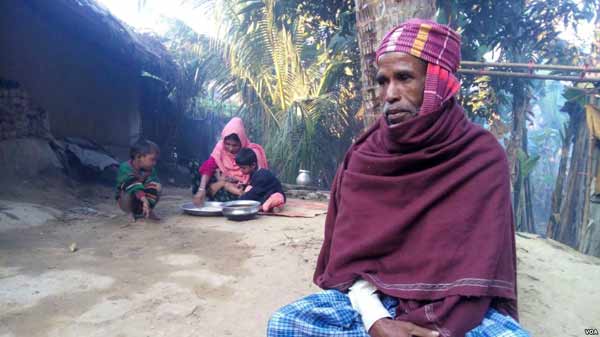
Noakhali, Bangladesh (BBN) - Since the Bangladesh government announced it has begun a process to relocate the country’s Rohingya refugees to a remote island in Bay of Bengal, a new tension has gripped refugee Mohammad Eliyas.
Eliyas, who fled violence in Myanmar and took refuge in Bangladesh, says that he is scared at the thought of being forced to relocate to the island of Thengar Char, which surfaced only 10 years ago and is flooded during high tide, reports VOA.
“To save our lives we crossed over to Bangladesh and we believed we would get better protection in this Muslim majority country. But now we are being told that we have to move to a remote island,” said Eliyas, 50, a day worker who lives with his wife and two children in a shanty-colony in Cox’s Bazar district.
Rights groups have voiced strong concerns about the government’s controversial plan to send the refugees to the island, saying it could trigger a total human rights catastrophe and a humanitarian disaster.
LONG HISTORY
The Rohingya religious minority has frequently fled to neighboring Bangladesh and other countries since the 1970s to escape economic hardship and what they say is persecution by Myanmar’s military.
Myanmar has consistently denied the allegations of persecution and abuse of the Rohingya.
Currently, there are up to half a million Rohingyas in Bangladesh, with over 90 per cent living as illegal or unregistered refugees across southeastern coastal areas.
Bangladesh first proposed to relocate the Rohingya refugees to Thengar Char in 2015.
But the idea faded from the news until late last month, when the government announced it had already set up a committee to push ahead with the plan.
But one land department official in Noakhali district, where Thengar Char is located, has told VOA that during the high tide the whole 30,000-hectare island goes under several meters of water, the land there is extremely unstable and uninhabitable.
Another local forest department official, who also did not want to be named for fear of reprisals from authorities, said mangrove trees have been planted on about 2,000 hectares of the island, but it would take at least 20 years for a small part of the island to be suitable for farming.
BLAME AND CONSULTATION
A government order said the refugees, registered and unregistered, would be relocated to the island to prevent them from “intermingling” with the Bangladeshi citizens.
Bangladesh says the Rohingya refugees are responsible for a deteriorating law and order situation in south eastern Bangladesh where they are located, blaming them for the depletion of forest resources and triggering "other social and economic problems,” in addition to spreading infectious diseases.
But Chowdhury Rafiqul Abrar, who directs the Dhaka-based Refugee and Migratory Movements Research Unit (RMMRU), said linking the entire refugee community to those problems is not justified.
“We have not seen any compelling evidence in support of the charges against the Rohingya community.
We must bear in mind that undocumented Rohingya community members live without any protection and have to fend for themselves,” said Abrar, who also teaches international relations at University of Dhaka.
Phil Robertson, Deputy Asia Director for Human Rights Watch, said the Bangladesh government should to understand that the protection of the refugees requires real consultation with them about their needs.
“These Rohingya refugees need protection, not a punitive transfer to an island where they will have no way to make a livelihood and must struggle to survive.
Thengar Char is also vulnerable to devastation by typhoons, which often hit Bangladesh,” Robertson told VOA.
SUITABLE FOR LIVING
However, Bangladesh’s State Minister of Foreign Affairs, Shahriar Alam said last week that the army has been tasked to make the island suitable for living.
“They will do whatever is needed to make the island livable. Then the refugees from Cox’s Bazar and other areas will be moved to Thengar Char. And the process for this relocation has already begun,” Alam said.
He added that the cost of relocating the refugees will be basically borne by the Bangladesh government.
“[For this relocation process], we may seek some international support from some friendly countries … The refugees will live in the island on temporary basis and we hope, the Myanmar government will take them back soon,” the minister added.
However, Human Rights Watch's Phil Robertson said that he does not believe that the island would be livable for the refugees that soon.
“UN agencies and government donors should not believe Dhaka’s claims that they can make such a place hospitable for these refugees, and they should tell Prime Minister Sheikh Hasina in no uncertain terms that they will strongly and consistently oppose this move,” he said.
If the plan does go forward, some Rohingya seem likely to take to the seas again in search of better conditions.
“If we go back to Myanmar, the military and the (local Rakhine Buddhists) will torture and kill us. We will be better taking a boat, and in the name of Allah, taking big risks, we will sail out for Malaysia,” said Mohammad Eliyas.
BBN/SK/AD